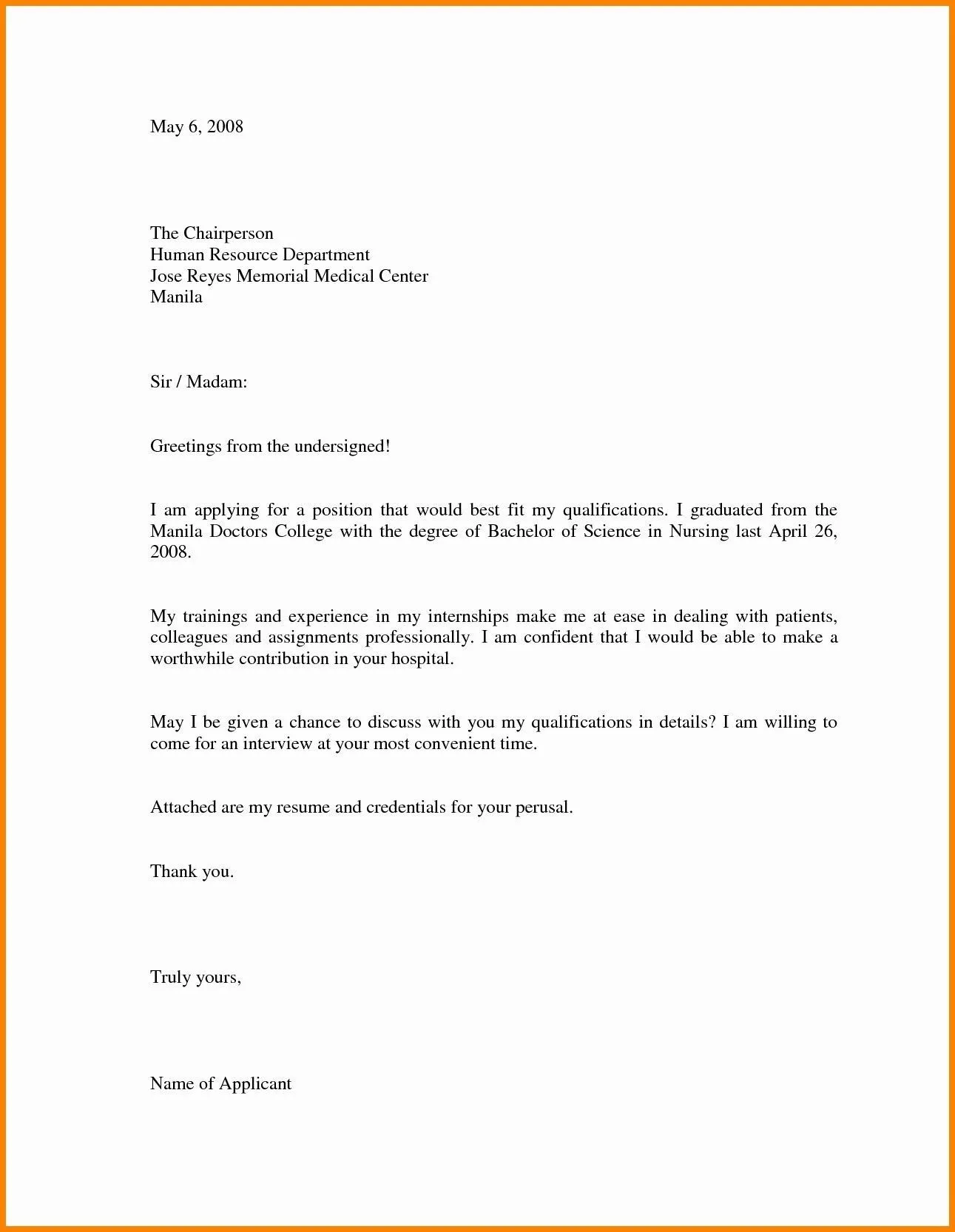Crafting a Killer Cover Letter
A cover letter is more than just a formality; it’s your first opportunity to make a strong impression on a potential employer. In the competitive world of professional writing, a well-crafted cover letter can set you apart from other candidates, showcasing your skills, experience, and personality. This guide will walk you through the essential components of a killer cover letter, ensuring you grab the hiring manager’s attention and increase your chances of landing an interview. Follow these strategies to create a cover letter that truly represents you.
Understanding the Purpose of a Cover Letter
The Importance of a Cover Letter
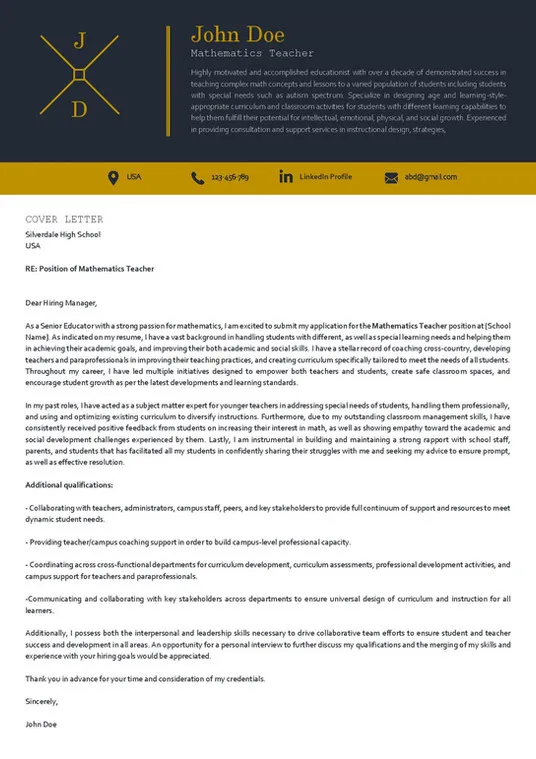
The importance of a cover letter cannot be overstated, especially for professional writers. It’s your chance to introduce yourself beyond the confines of a resume, providing context to your qualifications and demonstrating your communication skills. A strong cover letter allows you to connect with the hiring manager on a personal level, showing how your unique skills and experiences align with the job requirements.
Why is a cover letter needed?
A cover letter is needed because it bridges the gap between your resume and the job description. While your resume lists your skills and experience, the cover letter explains how those skills make you the ideal candidate for this specific role. It allows you to elaborate on your accomplishments, show your writing style, and express your genuine interest in the position and the company. A well-written cover letter adds personality and showcases your enthusiasm.
Structuring Your Cover Letter for Success
Structuring your cover letter effectively is crucial for capturing the hiring manager’s attention. A clear, concise, and well-organized cover letter demonstrates your professionalism and attention to detail. Let’s break down the key elements of a successful cover letter structure, ensuring each section contributes to your overall goal of landing the interview.
Header and Contact Information
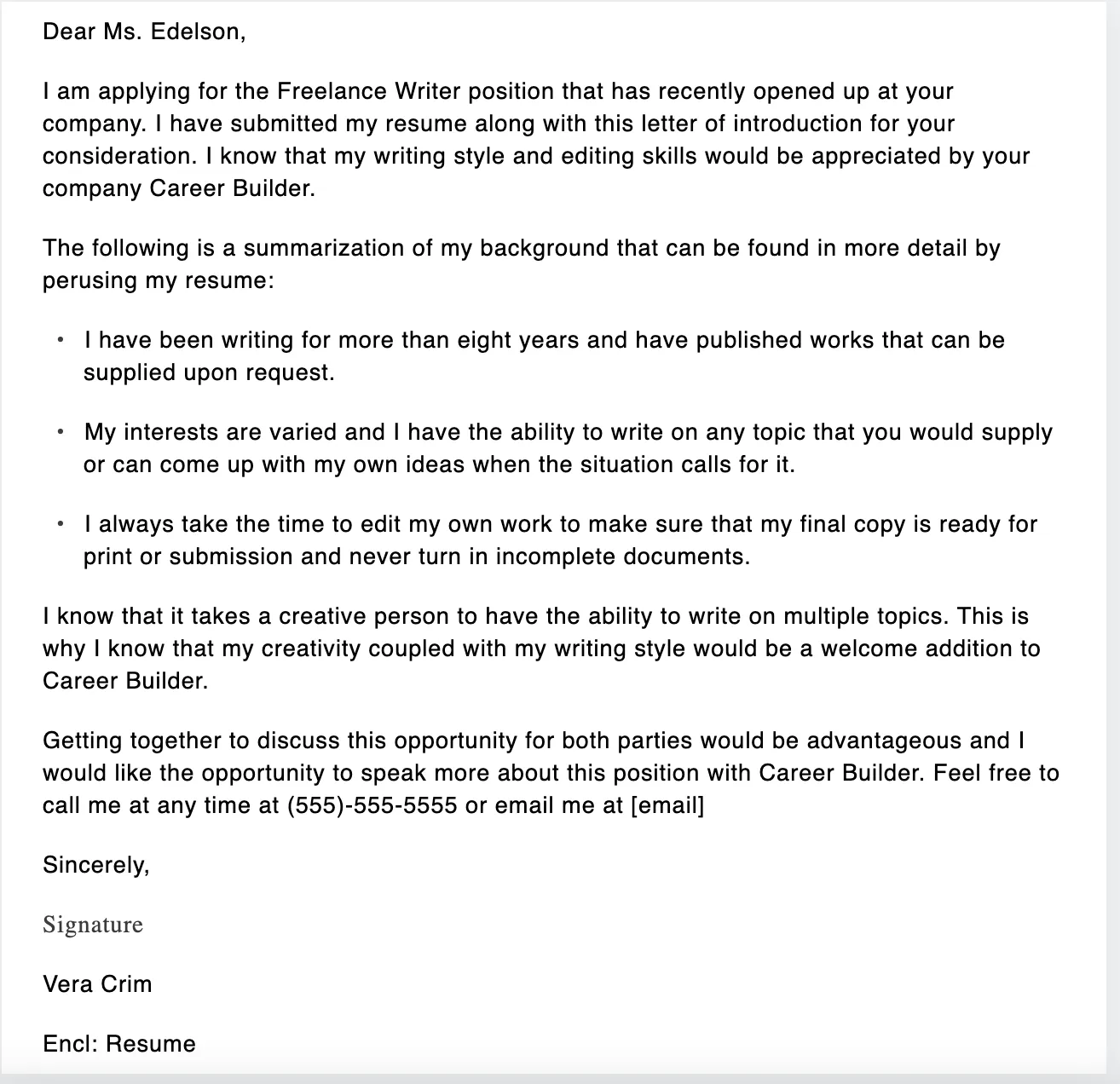
Start with a professional header that includes your contact information your name, phone number, email address, and optionally, your LinkedIn profile URL. This section ensures the hiring manager can easily reach you. Ensure your email address is professional and appropriate, and that your phone number is accurate and up-to-date. This section is essential for enabling the hiring manager to contact you quickly.
Addressing the Hiring Manager
Whenever possible, address the hiring manager by name. Researching the hiring manager’s name shows you’ve taken the initiative and shows your genuine interest in the opportunity. Use a professional salutation, such as “Dear Mr./Ms. [Last Name]” If you can’t find the hiring manager’s name, “Dear Hiring Manager” is a perfectly acceptable alternative.
Opening Paragraph Strategies
The opening paragraph is your hook. It should immediately grab the reader’s attention and state your purpose. Clearly mention the position you’re applying for and where you found the job posting. Briefly highlight one or two key skills or experiences that make you a strong fit for the role. Express your enthusiasm for the opportunity and the company, showing that you’re genuinely interested and excited about the prospect of joining their team.
Body Paragraphs and Highlighting Skills
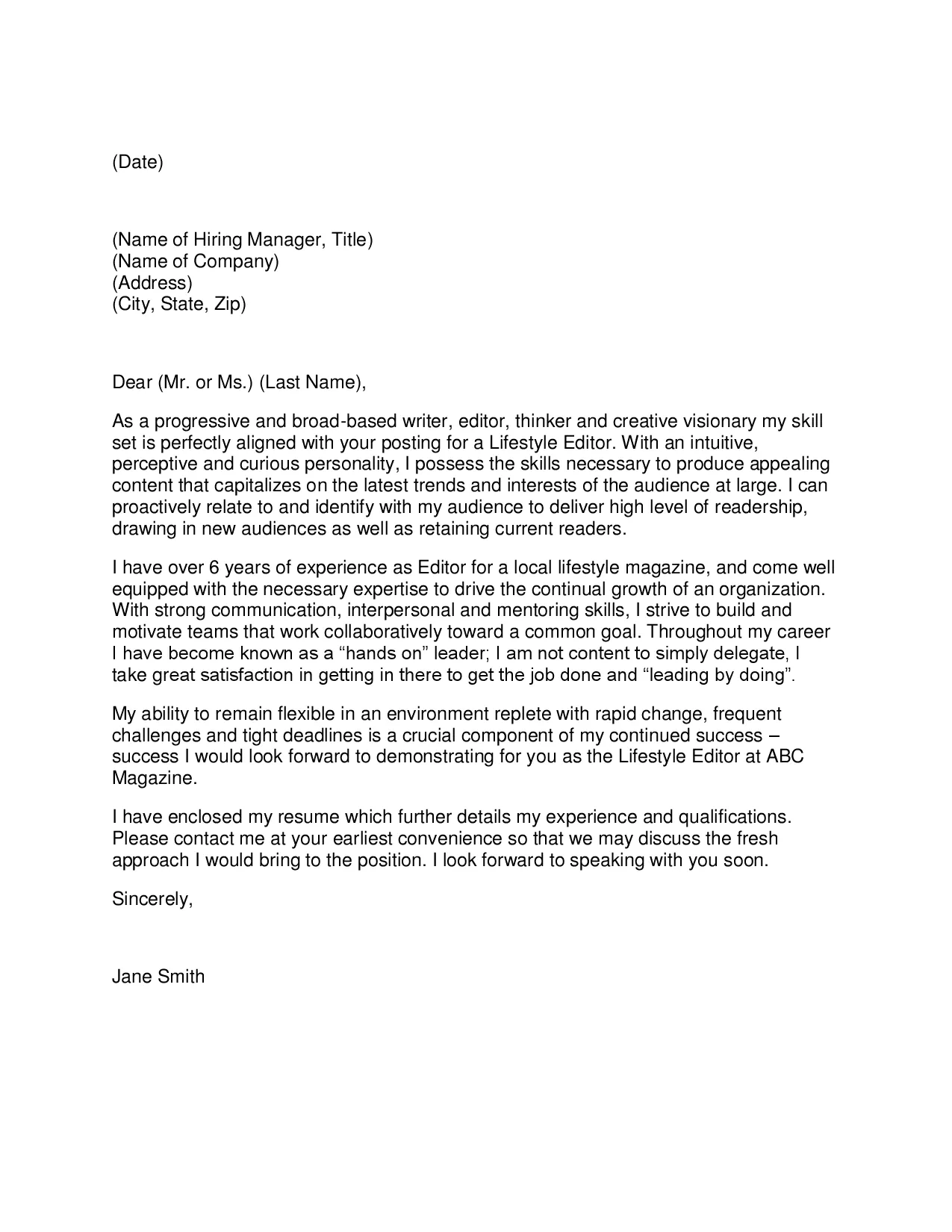
The body of your cover letter is where you showcase your skills and experience in detail. Use this space to elaborate on your qualifications, providing specific examples to demonstrate your abilities. Focus on what makes you unique, and tailor your examples to the job description. Each paragraph should highlight a different aspect of your skills and experience, showing how you’re a perfect fit for the position.
Showcasing Your Writing Skills
As a professional writer, your writing skills are paramount. Demonstrate your proficiency by using clear, concise, and engaging language. Vary your sentence structure to keep the reader interested, and avoid jargon or overly complex wording. Proofread meticulously to eliminate any errors in grammar or spelling. Your cover letter is a writing sample; make it count by showcasing your finest work.
Highlighting Relevant Experience
Focus on experiences most relevant to the job you’re applying for. For each role or project you mention, briefly describe your responsibilities and highlight your key accomplishments. Use the job description as a guide to identify which skills and experiences the employer values most. Tailor your letter to align your background with their requirements. Include your best work, even if it is from an unpaid project.
Quantifying Achievements
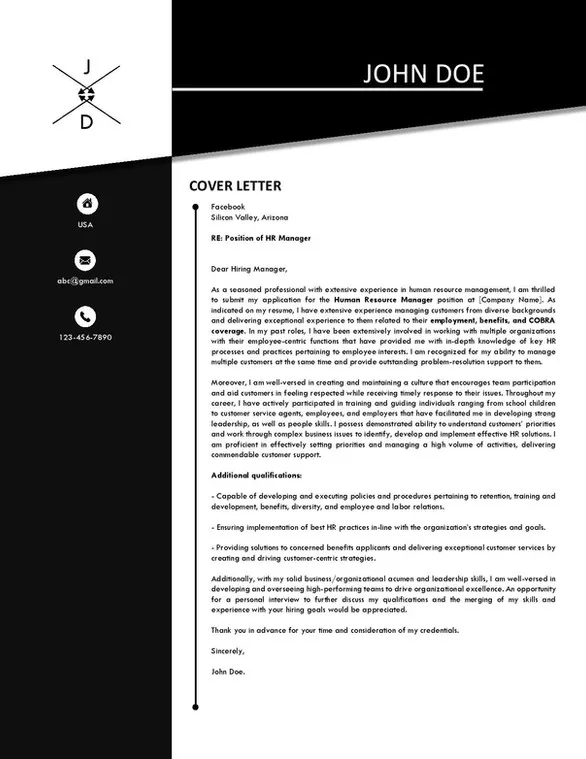
Whenever possible, quantify your achievements with numbers and data. Instead of saying “Improved website traffic,” say “Increased website traffic by 30% in six months.” Quantifying your accomplishments provides concrete evidence of your skills and makes your cover letter more impactful. Use data to show the results of your contributions and showcase the value you bring to the table.
Closing Your Cover Letter
The closing paragraph should reiterate your interest in the position and the company. Express your gratitude for their time and consideration. Include a call to action, such as requesting an interview or stating that you look forward to hearing from them. Keep it concise and professional, leaving a lasting positive impression.
Call to Action and Contact Information
End with a clear call to action, such as “I am eager to discuss how my skills and experience can contribute to your team. I welcome the opportunity for an interview.” Reiterate your contact information one last time and thank the hiring manager for their time and consideration. A polite and professional closing statement leaves a positive final impression.
Proofreading and Editing
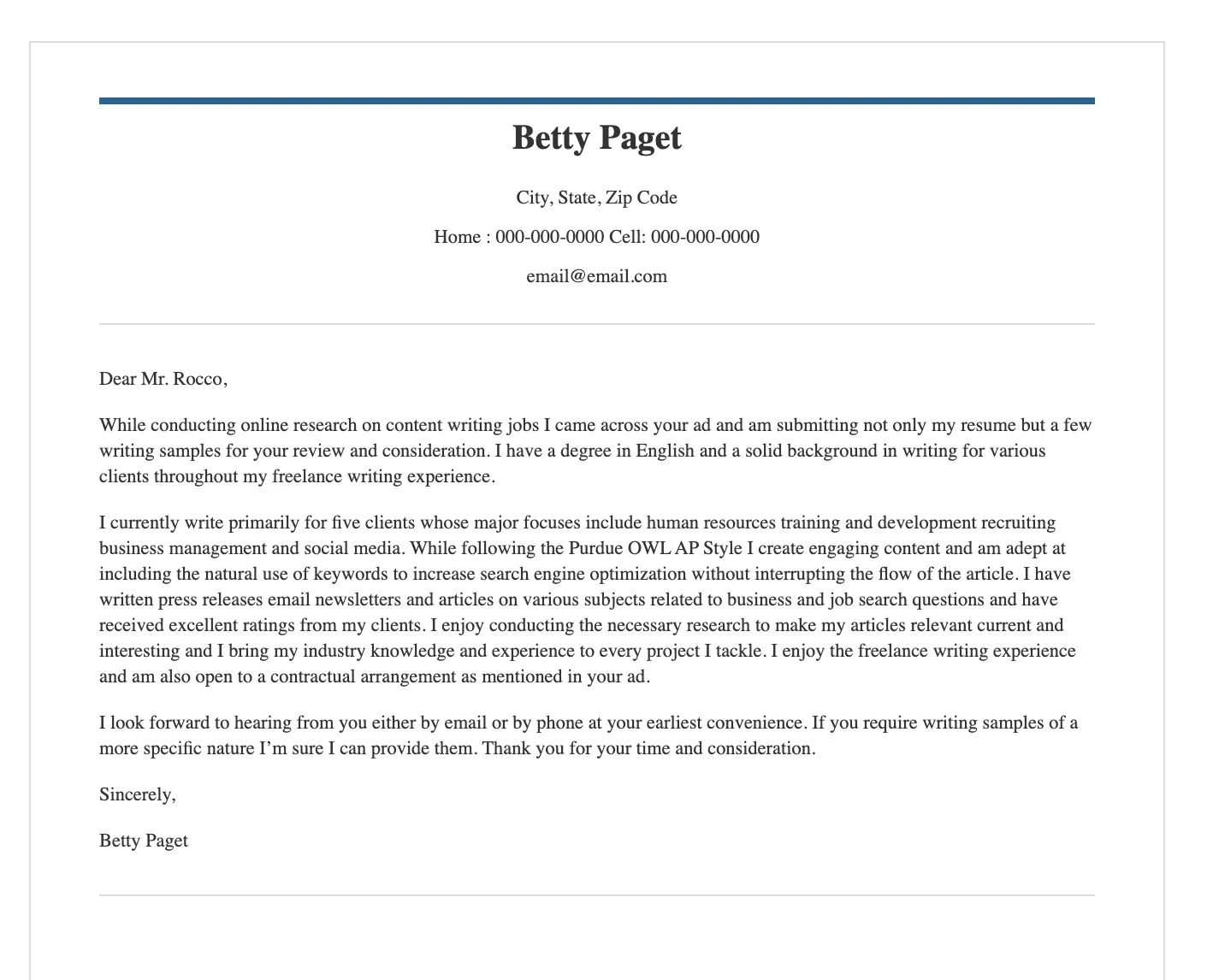
Proofread your cover letter meticulously. Check for grammatical errors, typos, and inconsistencies in formatting. Read it aloud to catch any awkward phrasing or sentence structure. If possible, ask a friend, colleague, or mentor to review your cover letter for any errors you might have missed. A polished and error-free cover letter demonstrates your attention to detail and professionalism.
Cover Letter Do’s and Don’ts
Understanding what to do and what to avoid is crucial when crafting a cover letter. Following best practices and avoiding common pitfalls can significantly increase your chances of making a positive impression. Here’s a breakdown of key dos and don’ts to guide you.
Dos: Best Practices for a Strong Cover Letter
Tailoring Your Cover Letter
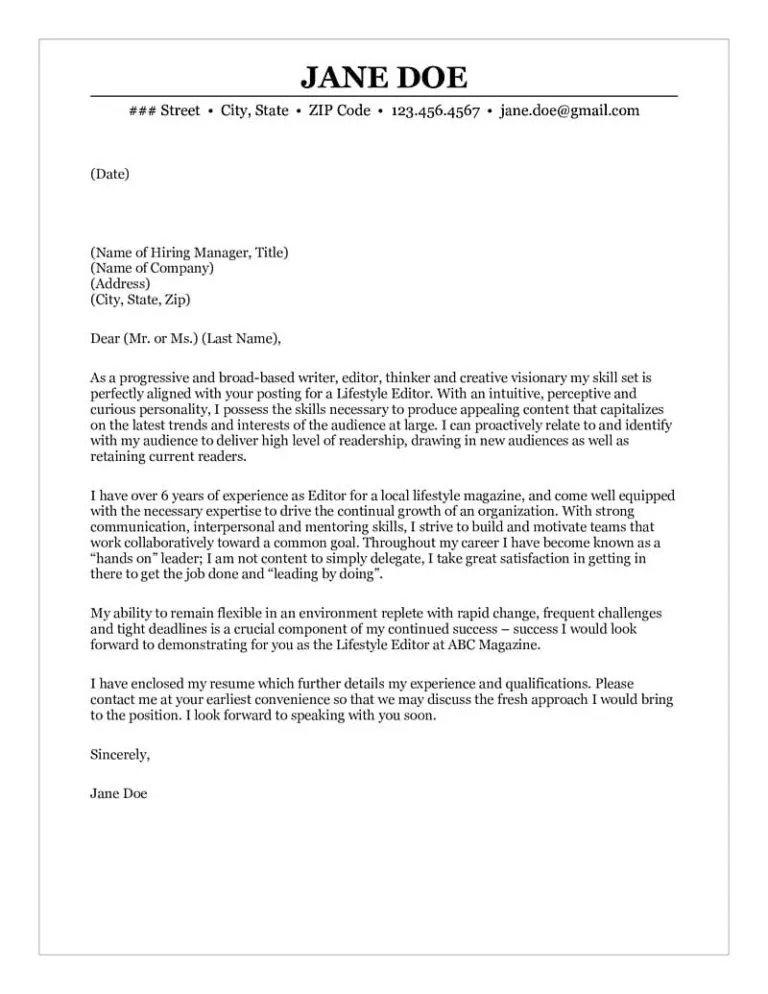
Always tailor your cover letter to the specific job and company. Use the job description as a guide to identify the key skills and experiences the employer values most. Research the company and its culture. Demonstrate your understanding of their needs and explain how your skills align with their requirements. Generic cover letters are easily recognized and often discarded.
Maintaining a Professional Tone
Maintain a professional and respectful tone throughout your cover letter. Avoid slang, casual language, or overly familiar phrasing. Use formal language and a respectful tone, ensuring your cover letter reflects your professionalism and attention to detail. Present yourself as a serious candidate who understands professional communication norms.
Using Action Verbs
Use strong action verbs to describe your accomplishments and responsibilities. Action verbs make your cover letter more dynamic and engaging, helping the hiring manager visualize your skills and experience. Examples include “managed,” “developed,” “implemented,” “achieved,” and “created.” Use action verbs to demonstrate what you did and the results you achieved.
Don’ts: Common Cover Letter Mistakes to Avoid
Generic Cover Letters
Avoid sending generic cover letters that could apply to any job. Tailor each letter to the specific position and company. Generic cover letters show a lack of effort and interest. Take the time to research the company and understand the job requirements. Address the specific needs of the employer to demonstrate that you’re a good fit.
Typos and Grammatical Errors
Typos and grammatical errors are a major turn-off for hiring managers. Proofread your cover letter meticulously. Use spell-check and grammar-check tools, but don’t rely on them entirely. Have a friend or colleague review your cover letter to catch any errors you might have missed. Ensure your cover letter is polished and professional.
Focusing on Yourself Too Much
While it’s important to highlight your skills and experience, avoid making the cover letter all about you. Instead, focus on how your skills and experiences benefit the company and address their needs. Demonstrate your understanding of the company’s goals and how you can contribute to their success. Balance your self-promotion with a focus on the employer’s needs.
Examples of Effective Cover Letters
Looking at examples can provide valuable insights into structuring and writing your cover letter effectively. Here are a few examples tailored to different types of writing roles to inspire your approach.
Cover Letter Example for a Marketing Writer
Dear [Hiring Manager Name],
I am writing to express my interest in the Marketing Writer position at [Company Name], as advertised on [Platform]. With my five years of experience in creating compelling marketing copy and my proven ability to drive engagement and conversions, I am confident I can significantly contribute to your team.
In my previous role at [Previous Company], I was responsible for developing content strategies, writing website copy, and creating email campaigns that generated a 20% increase in leads. My expertise in SEO best practices ensured our content ranked highly in search results, leading to increased organic traffic. I have a strong grasp of various writing styles and a demonstrated ability to adapt my writing to different target audiences.
I am particularly drawn to [Company Name]’s focus on [mention something specific about the company]. My passion for [relevant industry] aligns perfectly with your company’s mission, and I am excited about the opportunity to contribute my writing skills to your success. I am eager to learn more about this role and discuss how I can add value to your team.
Thank you for your time and consideration. I look forward to hearing from you soon.
Sincerely, [Your Name]
Cover Letter Example for a Technical Writer
Dear [Hiring Manager Name],
I am writing to apply for the Technical Writer position at [Company Name]. I am a highly skilled technical writer with a proven track record of creating clear, concise, and accurate documentation for complex technical products and processes.
During my tenure at [Previous Company], I was responsible for developing user manuals, API documentation, and training materials. I have extensive experience using tools such as [Tools used], and I am adept at simplifying technical concepts for a non-technical audience. I have a great attention to detail and I’ve always ensured that the documentation I produce complies with industry standards.
I am impressed with [Company Name]’s commitment to innovation, and I am eager to contribute my expertise in technical writing to help your customers understand and utilize your products effectively. I am excited to the prospect of joining your team.
Thank you for considering my application. I look forward to the opportunity to discuss my qualifications in further detail.
Best regards, [Your Name]
Cover Letter Example for a Freelance Writer
Dear [Client Name],
I am writing to express my interest in the freelance writing opportunity at [Company Name], as advertised on [Platform]. With my experience writing engaging content for various industries, including [industry], I am confident I can deliver high-quality, SEO-optimized content that meets your specific needs.
My portfolio includes [mention specific types of work like blog posts, articles, website copy], and I have a proven track record of delivering projects on time and within budget. I am proficient in [mention specific tools and platforms], and I am committed to producing content that drives results and exceeds expectations.
I am familiar with your company’s work and I am excited about the possibility of creating engaging content. I am confident that I can meet your requirements. Thank you for your time and consideration. I look forward to the opportunity to discuss how I can contribute to your team.
Best, [Your Name]
